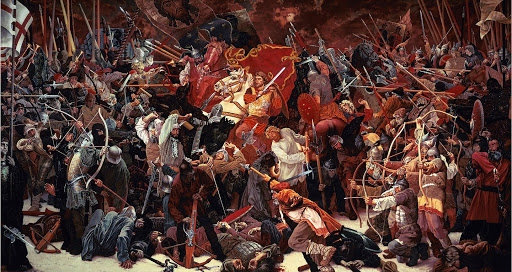Stamp: Battle of Bataan Map, Aircrafts (Tonga 1992)
Battle of Bataan Map, Aircrafts (Tonga 1992)
26 May (Tonga ) within release 50th Anniversary of the War in the Pacific goes into circulation Stamp Battle of Bataan Map, Aircrafts face value 42 Tongan seniti
| Stamp Battle of Bataan Map, Aircrafts in catalogues | |
|---|---|
| Michel: | Mi: TO 1218 |
Stamp is square format.
Also in the issue 50th Anniversary of the War in the Pacific:
- Mini Sheet - 50th Anniversary of the War in the Pacific face value 12*42;
- Stamp - Admiral Chester Nimitz, Battle of Midway Map face value 42;
- Stamp - Grumman F4F Wildcat face value 42;
- Stamp - General Holland Smith, Battle of Saipan and Tinian Map face value 42;
- Stamp - Supermarine Seafire face value 42;
- Stamp - Newspaper Article, Aircraft, Soldiers. Emblem face value 42;
- Stamp - General Curtis LeMay, Bombing of Japan Map face value 42;
- Stamp - General Douglas MacArthur, Liberation of Philippines Map face value 42;
- Stamp - Mitsubishi A6M (Zero) face value 42;
- Stamp - Douglas SBD (Dauntless) face value 42;
- Stamp - Newspaper Article, Warship, Aircraft face value 42;
- Stamp - Newspaper Article, Aircraft, Soldiers face value 42;
- Stamp - Battle of Bataan Map, Aircrafts face value 42;
Stamp Battle of Bataan Map, Aircrafts it reflects the thematic directions:
An air force, also known in some countries as an aerospace force or air army, is in the broadest sense, the national military branch that primarily conducts aerial warfare. More specifically, it is the branch of a nation's armed services that is responsible for aerial warfare as distinct from an army, navy, or a marine corps. Typically, air forces are responsible for gaining control of the air, carrying out strategic and tactical bombing missions, and providing support to land and naval forces.
The term "air force" may also refer to a tactical air force or numbered air force, which is an operational formation either within a national air force or comprising several air components from allied nations. Air forces typically consist of a combination of fighters, bombers, helicopters, transport planes and other aircraft.
Many air forces are also responsible for operations of the military space, intercontinental ballistic missiles (ICBM), and communications equipment. Some air forces may command and control other air defence assets such as anti-aircraft artillery, surface-to-air missiles, or anti-ballistic missile warning networks and defensive systems. Some nations, principally Russia, the former Soviet Union and countries who modelled their militaries along Soviet lines, have or had an air defence force which is organizationally separate from their air force.
Peace-time/non-wartime activities of air forces may include air policing and air-sea rescue.
Air forces are not just composed of pilots, but also rely on a significant amount of support from other personnel to operate. Logistics, security, intelligence, special operations, cyber space support, maintenance, weapons loaders, and many other specialties are required by all air forces.
An aircraft (pl. aircraft) is a vehicle that is able to fly by gaining support from the air. It counters the force of gravity by using either static lift or the dynamic lift of an airfoil, or, in a few cases, direct downward thrust from its engines. Common examples of aircraft include airplanes, rotorcraft (including helicopters), airships (including blimps), gliders, paramotors, and hot air balloons.Part 1 (Definitions and Abbreviations) of Subchapter A of Chapter I of Title 14 of the U. S. Code of Federal Regulations states that aircraft "means a device that is used or intended to be used for flight in the air."
Aviation is the practical aspect or art of aeronautics, being the design, development, production, operation and use of aircraft, especially heavier than air aircraft. The word aviation was coined by French writer and former naval officer Gabriel La Landelle in 1863, from the verb avier (synonymous flying), itself derived from the Latin word avis ("bird") and the suffix -ation.
A battle is an occurrence of combat in warfare between opposing military units of any number or size. A war usually consists of multiple battles. In general, a battle is a military engagement that is well defined in duration, area, and force commitment.
A map is a symbolic depiction emphasizing relationships between elements of some space, such as objects, regions, or themes. Many maps are static, fixed to paper or some other durable medium, while others are dynamic or interactive. Although most commonly used to depict geography, maps may represent any space, real or imagined, without regard to context or scale, such as in brain mapping, DNA mapping, or computer network topology mapping. The space being mapped may be two dimensional, such as the surface of the earth, three dimensional, such as the interior of the earth, or even more abstract spaces of any dimension, such as arise in modeling phenomena having many independent variables. Although the earliest maps known are of the heavens, geographic maps of territory have a very long tradition and exist from ancient times. The word "map" comes from the medieval Latin Mappa mundi, wherein mappa meant napkin or cloth and mundi the world. Thus, "map" became the shortened term referring to a two-dimensional representation of the surface of the world.





